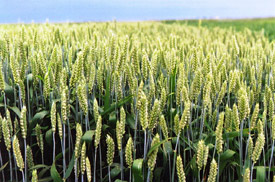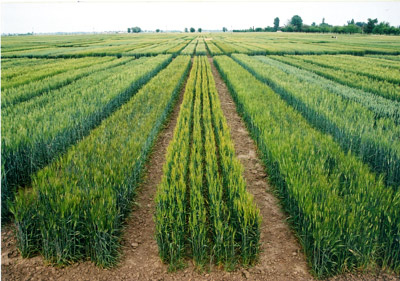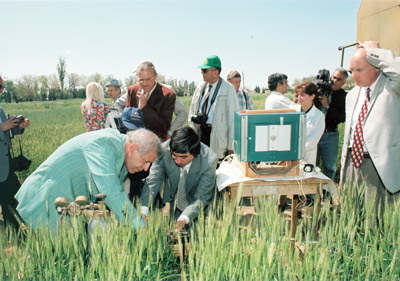
Last news
[20.06.2008]НАУЧНЫЙ РУКОВОДИТЕЛЬ И КОНСУЛЬТАНТ ДИССЕРТАНТОВ
[20.06.2008]НАУКА
ИСТИННА
[20.06.2008]Awards
[20.06.2008]Brief essay on scientific activity of Professor JALAL ALIYEV
[17.06.2008]Список книг Д.А.Алиева
Announcements
20.06.2008
On June 27, 2008 the talk of famous Japanese scientist in the field of photosynthesis, Professor Murata N. will be held in the Institute of Botany.
20.06.2008
On June 25, Tarlan Mammadov Hazarpasha oglu will defend his dissertation entitled "Identification, characterization and ... →
20.06.2008
The International Conference and Workshop on "Bioinformatics: Current Progress and Practical Applications" devoted to the 80th anniversary of J. Aliyev... →
Scientific achivements

НАУКА ИСТИННА
20.06.2008
(Документальная хроника)
В тяжелое для страны время политических игр трудный путь борьбы академика Джалала Алиева во имя принципов чистоты науки и торжества истины →
13.06.2008
ORIGIN: The variety was released at Research Institute of Agriculture crossing local "Garagylchyk" cultivar with "Norin-10" by a multistage selection. →
7.06.2008
Д.А.Алиев. Влияние микроэлементов на некоторые физиологические процессы и урожайность озимой пшеницы. →
News
Ocean bacteria absorb carbon dioxide
Marine bacteria have the capacity to take up and capture carbon dioxide with the help of sunlight. This has been discovered by researchers at Kalmar University in Sweden in collaboration with colleagues in Spain, Australia, and Russia. The finding is being published in the internationally respected scientific journal PNAS. This can be compared to a simple form of photosynthesis, where marine bacteria use energy from sunlight to absorb carbon dioxide. It was previously known that bacteria in oxygen-starved lakes can have this capacity, but it's new knowledge that bacteria in the open seas can do so as well. This challenges earlier knowledge that algae are the only organisms that capture carbon dioxide in the surface water exposed to sunlight. It remains unknown just how much carbon dioxide is captured by these bacteria."Even if it turns out that only a tiny fraction of carbon dioxide is captured by the bacteria, this can have an enormous impact, since more than 100 million tons of carbon dioxide is captured daily by algae through photosynthesis in the oceans. Bacteria may prove to take up millions of tons. We need to study this more," says Jarone Pinhassi, associate professor of marine microbiology at Kalmar University and one of the researchers behind the discovery.
Recently Jarone Pinhassi and his colleagues discovered that marine bacteria use sunlight as a source of energy, owing to a unique light-capturing pigment, proteorhodopsin, which is found in nearly half of sea bacteria. Oceans cover about 70 percent of the earth's surface, and there is a constant exchange of carbon dioxide between the atmosphere and the sea. Knowledge of marine bacteria may come to be of major importance to our understanding of what the climate impact of rising carbon dioxide emissions means for the oceans.
"How many bacteria in the oceans have the ability to take up carbon dioxide and how much carbon dioxide they capture are exciting questions for the future. Many scientists are going to want to research this," Jarone Pinhassi believes.
Jarone Pinhassi and doctoral candidate Laura GГіmez-Consarnau at Kalmar University are the Swedish researchers who worked with the current study. Read the entire article, published this week on the home page for Proceedings of the National Academy of Science, USA: www.pnas.org






